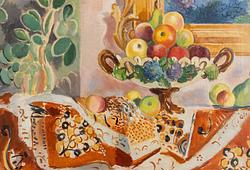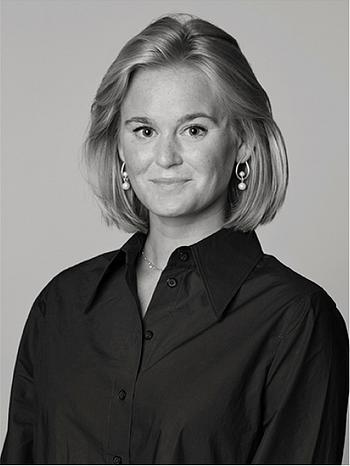Christian Berg
”Vattenfigur II”
Signed C.B. Numbered ex. 2. Foundry stamp E. Pettersson Fud. Conceived 1928/29. Matte-polished/patinated bronze. Height 42 cm. Mounted on a stone base. Height including stone base 54 cm. A signed copy of the book ‘Christian Berg Livslinjer och formtankar’ by Sven Sandström, along with three signed sketches and six lithographs, are accompanying the lot.
Saleroom notice
Conceived 1928/29.
Provenance
Purchased directly from the artist. Thereafter inherited to the current owner.
Literature
Torvald Berg, "Christian", 1991, listed as no. 38, cf. illustration p. 189.
More information
Christian Berg began his artistic career in a naturalistic style, which changed around 1925 when he came into contact with the Halmstad Group and developed an interest in post-Cubism. Although he was skilled as a painter, his greatest success came in sculpture. His works are characterized by an engineer’s precision, and drawing on Cubism, he was inspired by ancient Egyptian and Greek sculpture, which he gave an architectural form infused with elements from nature.
Sven Sandström writes in Christian Berg – Christian Berg - livslinjer och formtankar" about ”Vattenfigur II:
“More restrained, yet equally organic in its lines, is Water Figure. This time, the idea did not emerge from the usual model studies; this is revealed by the complex form and its evocative details. The artist transformed a concrete seaside scene: a woman climbing out of the water into a slender boat. One could simultaneously see the boat with its rounded keel and the woman both above and below the surface. Hence the varied structures of the sculpture. Seen from above, it twists almost like a screw, with three main directions when viewed from the side. The angle of the hips and legs turns rightward from the body’s direction, while the head rises from the folds of the chest to the left, like from a flower calyx, with the shell-like arms raised to form an outward-flaring collar that enhances its proud allure. The boat’s keel and prow reappear in the dark-patinated back and one side, while the double curve of the female hip returns on the left.”
A larger version of this sculpture, Vattenfigur, was created by Christian Berg in red granite and installed as a fountain sculpture at Västertull in Lund in 1963.
Artist
Christian Berg was a Swedish sculptor. He commenced his career as a naturalistic animal painter and he up until 1926 retained his artistry solely to painting. He encountered post-cubism whilst in Paris, which quickly became his artistic language. The road to sculpting he found one day when, with the help of clay, solved a problem with the lines of a drawn torso. Berg’s first sculpture, Torso 1926, became the starting point to his most intensive and active period of 1926-30. He created a collection of post-cubist sculptures and many torsos in various stages of development. He primarily worked with clearly defined concave and convex forms, allowing light to play on alternating glossy and matte surfaces. With the exception of his numerous stylised portrait sculptures ecclesiastical decorations, Berg remained loyal to abstract sculptures during the entirety of his artistic career.
Read more







































































